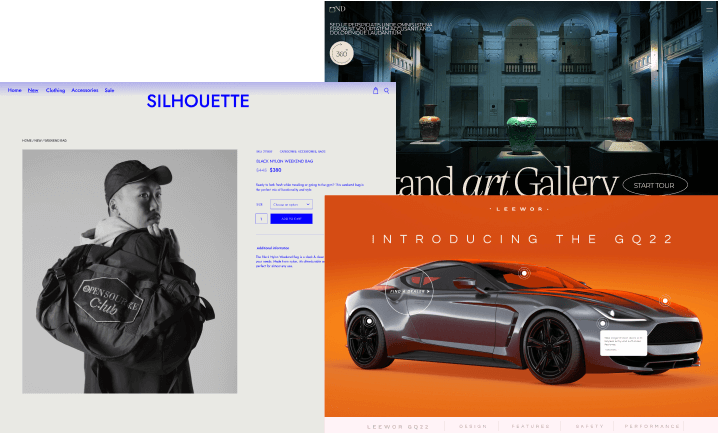Color tint is an essential part of design theory for using a single color’s lighter and darker variations.
To create color tints, white is added to a base color. Tints are fundamental to web design as they allow for creating innovative sites and appealing sites.
Benefits of Color Tint
Color tint is an essential aspect of web design as it involves human perception, cultural associations, and color psychology.
- UX: The practical application of color tints enables designers to create sites that successfully improve a visitor’s UX. They do so by making colors less intense and helping users focus on a particular design area. Tints also allow them to find the information they need and direct them to Calls to Action (CTAs).
- Web Design: Using tints as part of a color palette has numerous advantages. For one, it simplifies the color selection process. As a designer, you have fewer colors to choose from, preventing your design from accidentally looking like a rainbow spattered across it. Secondly, tints automatically give your color palette a cohesive and polished look since they are produced from the same base color.
How to Use Color Tint in Web Design
Color tint can be used in many ways, including:
- Consistent branding: Using tints of one color for different effects and objectives across various marketing collateral gives your brand a polished, unified look.
- Adding contrast: Creating contrast is crucial for visibility and effortless navigation. For instance, pairing a light tint with a dark shade creates contrast.
- Blending in: While color can help elements stand out, used differently, it can make elements blend or look more minimalistic.
- Separate and simplify: It would be hard to tell them apart if all the design elements were of a similar tone. When you have to organize a lot of information, color variation can help visually separate different layout sections. Also, using a palette of a base color prevents a busy design from looking cluttered or overwhelming with too many color selections.
- Dimension and depth: Tints are mainly used to represent shadow or light to create an illusion of dimension and depth.
- Theme and mood: Color choices infuse a design with emotion and atmosphere, such as presenting summer, tropical vacations, or just a laid-back night at home.
- Using gradients: Gradients help apply multiple tints at once. When used with transparency effects, they are a subtle option for adding more color to your designs.
- Expand a limited color palette: If you are limited as to how many colors you can use in your design — due to stylistic choice, printing requirements, or brand guidelines, you can expand your palette with tints.
- Keep it simple: If you want an understated or minimalistic design, a monochromatic (one-color) color scheme can give enough variation while keeping the single color clean, aesthetic, and straightforward.
- Tint and text: Text does not have to be black, gray, or white. Using a tint is an excellent and easy way to tie an entire design and typography.
Creating Tints
Some design programs have tools to create tints for you; however, these can be restricted or cannot be customized. On the other hand, many online tools offer the creativity and flexibility to achieve your objectives with tints.




